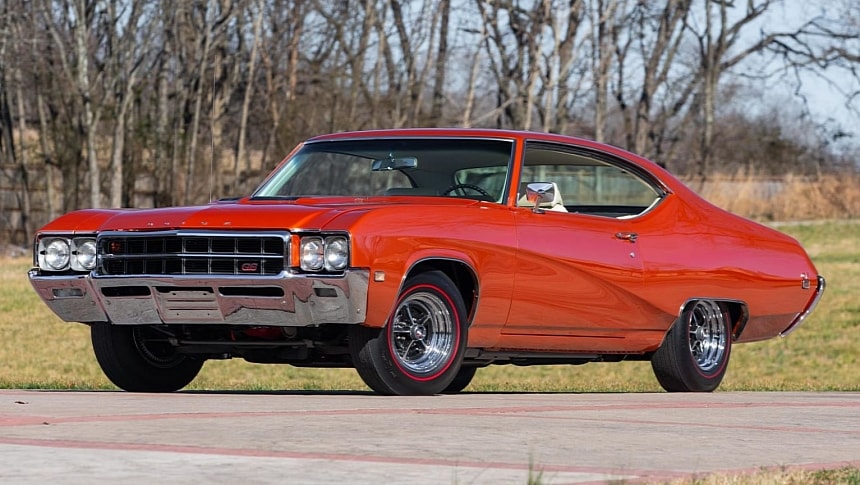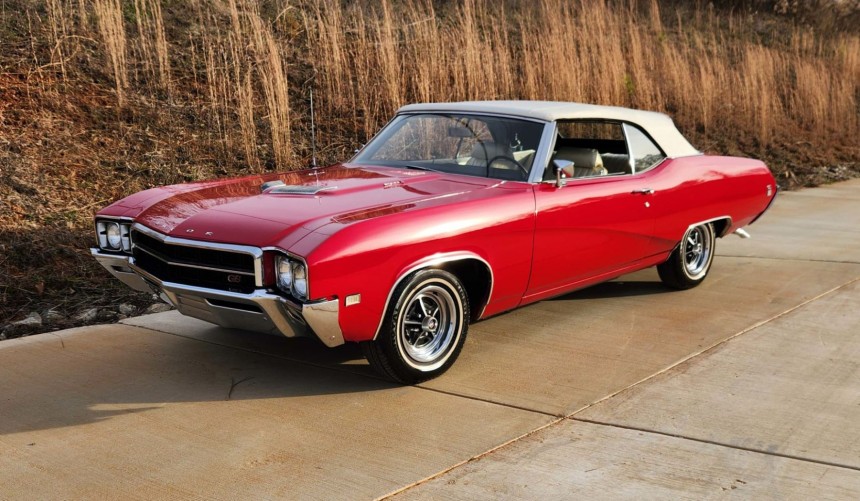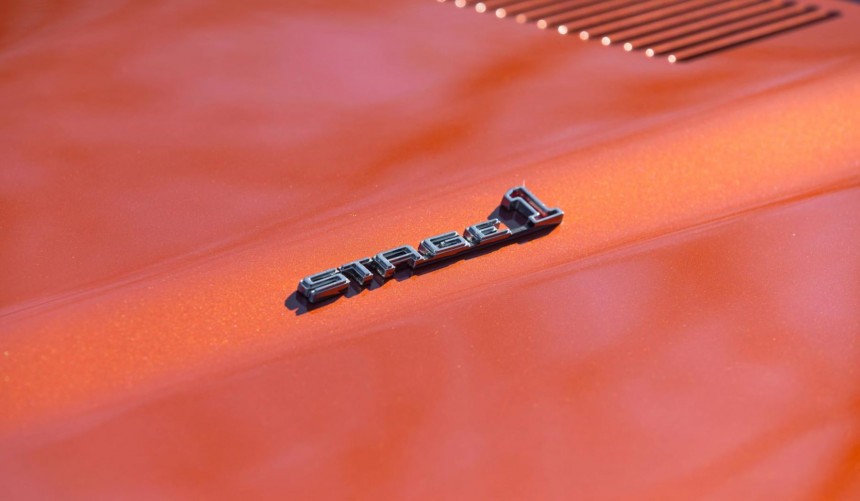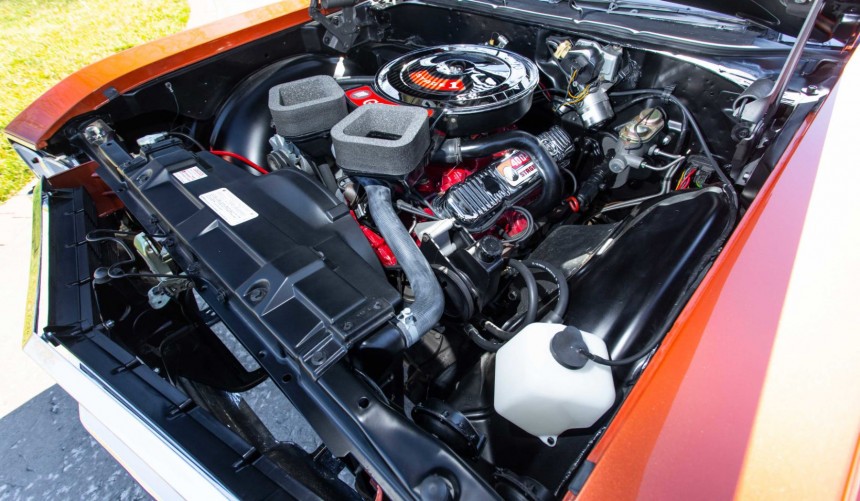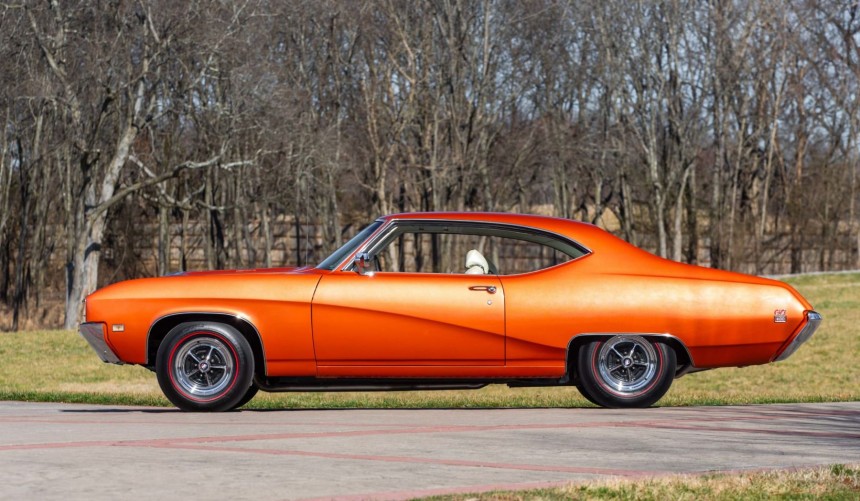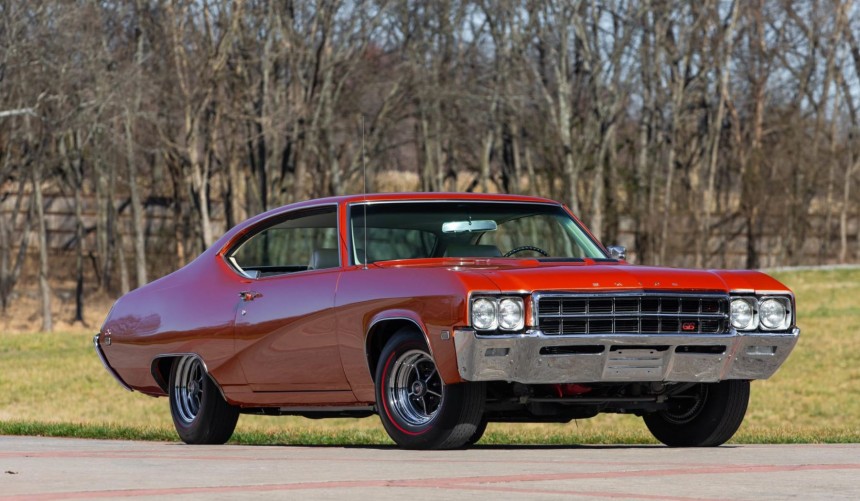With rather subdued looks and a purposefully underrated output rating, the GS 400 Stage 1 was a brute in a suit that many enthusiasts slept on in 1969.
In 1936, Buick's long-time upscale division infused some excitement into its lineup by stuffing its most powerful V8 into an intermediate model.
The resulting model, officially dubbed Century and later nicknamed "The Banker's Hot Rod," managed to not only receive interest in Buick but laid the groundwork for the muscle cars that would rule the streets more than three decades later.
After the initial Century was discontinued in 1942, the factory-built performance torch was passed down to GM sibling Oldsmobile, who used a similar formula in its 1949 Rocket 88. Then, in 1955, Buick revived the Century and brought excitement back to its ranks on both the streets and NASCAR tracks.
But by 1964, it was Pontiac who took the factory performance reigns with their GTO. A highly successful performance package available for the LeMans, the GTO ignited the fiercest horsepower war in the history of the American automotive industry.
Though it continued to focus on delivering affordable luxury cars, Buick was one of the first Detroit brands to come up with an answer to the GTO.
By mid-1965, the division introduced its own performance package called Gran Sport. Available for the Skylark, the Pontiac LeMans' A-body sibling, the package added a host of upgrades, including a 325-hp 400-ci (6.6-liter) "nailhead" V8 borrowed from full-size Buicks.
While the first Skylark-based Gran Sport and its 1966 successor were both terrific upscale muscle cars, none managed to get close to the GTO in terms of sales.
However, that didn't discourage Buick engineers from continuing to refine the high-performance package, and by 1968, when the second-generation Skylark was introduced, the Gran Sport became a separate model available with a redesigned 400 (released a year earlier) as well as the brand-new Stage 1, an over-the-counter, dealer-installed option that pushed performance even further.
For the 1969 model year, the GS 400 returned with minimal changes. Aesthetically, the most noteworthy feature was the redesigned Cool-Dual Induction system, which was now located in the center of the hood and featured two ducted snorkels that did a better job of feeding cold air into the Quadrajet carb.
Under the hood, the 400 V8 introduced in 1967 was still rated at 340 hp and 440 lb-ft (598 Nm) of torque, while the chassis received the same standard heavy-duty suspension system praised for making the GS one of the best-handling high-performance intermediates of the era.
However, the big news for 1969 was the addition of the Stage 1 package to the official factory options list.
The Stage 1 option was created in 1967 by a group of dedicated Buick engineers led by Dennis Manner.
The team saw real potential in the all-new 400 V8, which was capable of delivering enough torque for a heavy-duty truck, but they reasoned that its true horsepower potential was still untapped.
Therefore, the engineers devised a new set of cast-iron cylinder heads with larger valves, then added a series of high-performance hardware, including a high-lift camshaft, beefier valve springs, tubular pushrods, a higher-capacity fuel pump, a new distributor, a Quadrajet four-barrel carb with bigger jets and a larger diameter exhaust.
With the Stage 1 package installed, the 400 was rated at 345 or 350 hp (depending on the brochure) - just five to ten horses over the stock 400.
But, as you can imagine, Manner and his team didn't go through all that trouble just to achieve five to ten horses.
As it did back in 1965 with the original Gran Sport, when the 401 "nailhead" inside the engine bay was marketed as a 400 to dodge GM's self-imposed displacement limit on intermediates, Buick purposefully underrated the Stage 1-equipped GS' output rating, this time, to keep insurance premiums at bay.
In reality, the package helped the engine deliver closer to the 390-400 hp range. Moreover, it gave owners a great platform to extract even more power with simple bolt-on upgrades.
While the 1969 GS Stage 1 was an underrated street fighter, enthusiasts looking for ultimate factory performance chose their weapon according to factory output ratings, magazine reviews, and, last but not least, price.
The era's most popular magazines tested the GS 400 Stage 1 and noted that it felt more powerful than the advertised 345-350 hp, but because it was a bit more expensive than its main GM rivals - the Chevelle SS 396 or the Pontiac GTO Judge - and had a lower horsepower rating, it failed to become the most popular GM intermediate of 1969.
When the model year ended, Buick sold only 1,256 GS sports coupes and 212 convertibles equipped with the Stage 1 package. For comparison, Chevy sold nearly 90,000 SS 396 Chevelles in 1969, while Pontiac unleashed 6,833 Judges on public roads.
More than half a century later, the 1969 GS 400 Stage 1 still lives in the shadow of its intermediate rivals, with few muscle car fanatics showing it the respect it deserves.
Though few of the nearly 1,500 units have survived in highly original form, their value rarely exceeds $60,000, while a GTO Judge from the same year can go for over $100,000.
One example is the Special-Order Fireglow Orange GS shown above. One of only three 1969 GS 400s delivered with the unique paint, it sold at a Mecum auction in 2021 for $57,200.
In 1970, GM allowed its divisions to equip high-performance intermediates with V8 larger than 400 ci. This led Buick to unleash the GS 455 Stage 1 and GSX Stage 1, both of whom became the brand's most iconic muscle cars.
However, it's worth remembering that the 1969 GS 400 brought the Stage 1 package to the masses, and even though it was grossly underrated, it remains one of the all-stars of the golden age of muscle.
For more on this legendary ride, we recommend watching the YouTube video below by MuscleCarOfTheWeek.
The resulting model, officially dubbed Century and later nicknamed "The Banker's Hot Rod," managed to not only receive interest in Buick but laid the groundwork for the muscle cars that would rule the streets more than three decades later.
After the initial Century was discontinued in 1942, the factory-built performance torch was passed down to GM sibling Oldsmobile, who used a similar formula in its 1949 Rocket 88. Then, in 1955, Buick revived the Century and brought excitement back to its ranks on both the streets and NASCAR tracks.
But by 1964, it was Pontiac who took the factory performance reigns with their GTO. A highly successful performance package available for the LeMans, the GTO ignited the fiercest horsepower war in the history of the American automotive industry.
A brief history of the Gran Sport
By mid-1965, the division introduced its own performance package called Gran Sport. Available for the Skylark, the Pontiac LeMans' A-body sibling, the package added a host of upgrades, including a 325-hp 400-ci (6.6-liter) "nailhead" V8 borrowed from full-size Buicks.
While the first Skylark-based Gran Sport and its 1966 successor were both terrific upscale muscle cars, none managed to get close to the GTO in terms of sales.
However, that didn't discourage Buick engineers from continuing to refine the high-performance package, and by 1968, when the second-generation Skylark was introduced, the Gran Sport became a separate model available with a redesigned 400 (released a year earlier) as well as the brand-new Stage 1, an over-the-counter, dealer-installed option that pushed performance even further.
Stage 1 for everyone
Under the hood, the 400 V8 introduced in 1967 was still rated at 340 hp and 440 lb-ft (598 Nm) of torque, while the chassis received the same standard heavy-duty suspension system praised for making the GS one of the best-handling high-performance intermediates of the era.
However, the big news for 1969 was the addition of the Stage 1 package to the official factory options list.
Grossly underrated
The team saw real potential in the all-new 400 V8, which was capable of delivering enough torque for a heavy-duty truck, but they reasoned that its true horsepower potential was still untapped.
Therefore, the engineers devised a new set of cast-iron cylinder heads with larger valves, then added a series of high-performance hardware, including a high-lift camshaft, beefier valve springs, tubular pushrods, a higher-capacity fuel pump, a new distributor, a Quadrajet four-barrel carb with bigger jets and a larger diameter exhaust.
With the Stage 1 package installed, the 400 was rated at 345 or 350 hp (depending on the brochure) - just five to ten horses over the stock 400.
But, as you can imagine, Manner and his team didn't go through all that trouble just to achieve five to ten horses.
As it did back in 1965 with the original Gran Sport, when the 401 "nailhead" inside the engine bay was marketed as a 400 to dodge GM's self-imposed displacement limit on intermediates, Buick purposefully underrated the Stage 1-equipped GS' output rating, this time, to keep insurance premiums at bay.
In reality, the package helped the engine deliver closer to the 390-400 hp range. Moreover, it gave owners a great platform to extract even more power with simple bolt-on upgrades.
Not as popular as it should've been
The era's most popular magazines tested the GS 400 Stage 1 and noted that it felt more powerful than the advertised 345-350 hp, but because it was a bit more expensive than its main GM rivals - the Chevelle SS 396 or the Pontiac GTO Judge - and had a lower horsepower rating, it failed to become the most popular GM intermediate of 1969.
When the model year ended, Buick sold only 1,256 GS sports coupes and 212 convertibles equipped with the Stage 1 package. For comparison, Chevy sold nearly 90,000 SS 396 Chevelles in 1969, while Pontiac unleashed 6,833 Judges on public roads.
Extremely rare but still underrated
Though few of the nearly 1,500 units have survived in highly original form, their value rarely exceeds $60,000, while a GTO Judge from the same year can go for over $100,000.
One example is the Special-Order Fireglow Orange GS shown above. One of only three 1969 GS 400s delivered with the unique paint, it sold at a Mecum auction in 2021 for $57,200.
In 1970, GM allowed its divisions to equip high-performance intermediates with V8 larger than 400 ci. This led Buick to unleash the GS 455 Stage 1 and GSX Stage 1, both of whom became the brand's most iconic muscle cars.
However, it's worth remembering that the 1969 GS 400 brought the Stage 1 package to the masses, and even though it was grossly underrated, it remains one of the all-stars of the golden age of muscle.
For more on this legendary ride, we recommend watching the YouTube video below by MuscleCarOfTheWeek.
